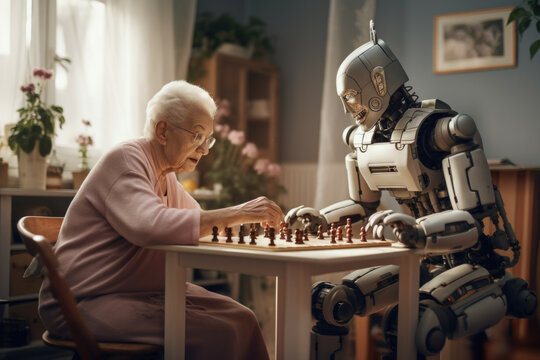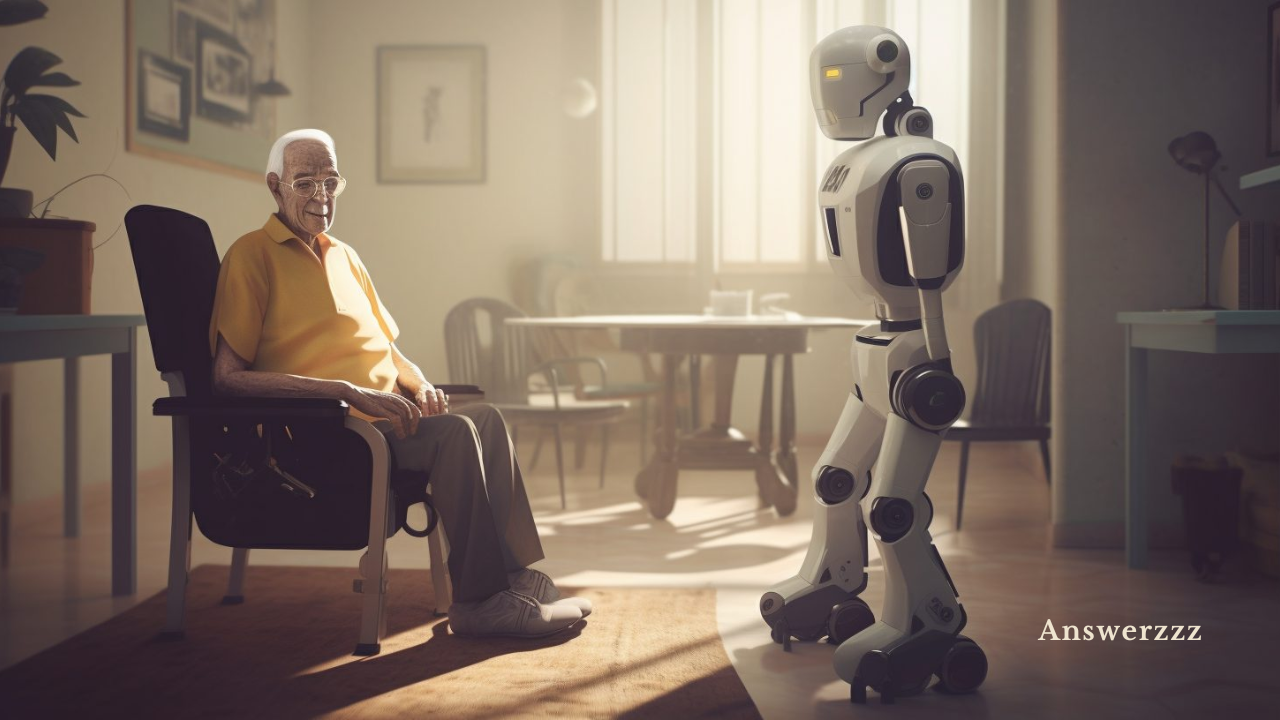As the global population ages, the need for effective elder care has never been more pressing. Robotics has emerged as a promising solution to address the challenges faced by caregivers and elderly individuals alike. The integration of robotics in elder care offers innovative solutions to enhance the quality of life for seniors, alleviate caregiver burden, and improve healthcare outcomes. This article explores the future of robotics in elder care, examining current trends, technological advancements, and the potential impact on seniors and the healthcare system.
Understanding the Aging Population
The demographic shift towards an older population presents unique challenges for healthcare systems worldwide. By 2050, the number of people aged 60 years and older is projected to reach 2 billion, a significant increase from 1 billion in 2019. This shift necessitates a reevaluation of how society cares for its elderly members. Many seniors prefer to age in place, leading to an increased demand for home-based care solutions. However, the current workforce of caregivers is insufficient to meet this demand, leading to the exploration of robotics as a viable alternative.

The Role of Robotics in Elder Care
Robots are increasingly being designed and developed specifically for elder care, with functionalities that cater to the unique needs of seniors. These robots can assist in various aspects of care, including companionship, medication management, physical assistance, and emergency response. By leveraging advanced technologies such as artificial intelligence (AI), machine learning, and sensors, robotic systems can provide personalized care that adapts to the changing needs of elderly individuals.
Companionship and Social Interaction
One of the most significant benefits of robotic systems in elder care is their potential to combat loneliness and social isolation among seniors. Many older adults experience feelings of isolation, which can lead to adverse mental health outcomes. Companion robots, such as those equipped with conversational AI, can engage in meaningful conversations, provide emotional support, and stimulate cognitive function through interactive activities. These robots can also remind seniors of important events and encourage them to maintain social connections with family and friends, enhancing their overall well-being.
Medication Management and Health Monitoring
Robots can play a crucial role in managing medication schedules and monitoring health conditions. Smart medication dispensers equipped with sensors can alert seniors when it’s time to take their medications, ensuring adherence to prescribed regimens. Moreover, wearable health monitoring devices can track vital signs, such as heart rate and blood pressure, and relay this information to healthcare providers in real-time. By automating these processes, robots can reduce the likelihood of medication errors and facilitate timely interventions when health concerns arise.
Physical Assistance and Mobility Support
Many seniors face mobility challenges, making it difficult for them to perform daily activities independently. Robots designed for physical assistance can help seniors with tasks such as standing up, walking, and carrying objects. Robotic exoskeletons, for instance, can provide support for individuals with limited mobility, enabling them to regain independence and improve their quality of life. Additionally, robots can assist with household chores, allowing seniors to maintain a clean and safe living environment without excessive physical strain.
Emergency Response and Safety Monitoring
The safety of seniors living alone is a significant concern for caregivers and families. Robotic technology can enhance safety monitoring by integrating systems that detect falls or other emergencies. For example, fall detection sensors can alert caregivers or emergency services when an incident occurs, enabling a swift response. Moreover, robots can serve as an emergency communication device, allowing seniors to call for help when needed. By providing peace of mind to both seniors and their families, these technologies can foster a sense of security.
Technological Advancements Driving Robotics in Elder Care
The future of robotics in elder care is being shaped by rapid technological advancements. Innovations in AI, machine learning, and robotics are paving the way for more sophisticated and capable systems that can better understand and respond to the needs of seniors. As these technologies continue to evolve, we can expect to see a range of robotic applications that enhance the quality of elder care.
Artificial Intelligence and Machine Learning
AI and machine learning algorithms enable robots to learn from their interactions with users and adapt their responses accordingly. This personalization is essential for effective elder care, as each senior has unique preferences and needs. For instance, AI-driven companion robots can analyze a senior’s mood and adjust their conversation style to provide the appropriate level of engagement. Additionally, machine learning can be applied to health monitoring systems, allowing robots to recognize patterns and predict potential health issues before they escalate.
Advanced Sensors and the Internet of Things (IoT)
The integration of advanced sensors and IoT technology is revolutionizing elder care robotics. Sensors can monitor a wide range of activities, from daily routines to environmental conditions, ensuring a safe living space for seniors. IoT connectivity allows robots to communicate with other smart devices in the home, creating a cohesive system that enhances overall care. For example, a smart home system can adjust lighting and temperature based on a senior’s preferences and behaviours, improving comfort and safety.
Collaborative Robotics
Collaborative robots, or cobots, are designed to work alongside humans, enhancing the capabilities of caregivers rather than replacing them. In elder care settings, cobots can assist healthcare professionals in performing tasks more efficiently, such as lifting and transferring patients. This collaborative approach can alleviate caregiver fatigue and reduce the risk of injury, leading to better outcomes for both caregivers and seniors. As the demand for elder care continues to rise, the role of cobots will become increasingly important.
Addressing Challenges and Concerns
While the potential benefits of robotics in elder care are significant, several challenges and concerns must be addressed. The implementation of robotic systems raises ethical, practical, and social considerations that need careful consideration.
Ethical Considerations
The introduction of robotics into elder care prompts ethical questions regarding autonomy, privacy, and the nature of human-robot relationships. For instance, seniors may feel uncomfortable relying on robots for companionship or care, fearing that it diminishes the human element of caregiving. It is crucial to ensure that robots are designed to respect the dignity and autonomy of elderly individuals, allowing them to make choices about their care and interactions with technology.
Cost and Accessibility
The cost of developing and implementing robotic systems in elder care can be a significant barrier to widespread adoption. Many healthcare facilities and families may find the expense of advanced robotic solutions prohibitive. To promote accessibility, policymakers and stakeholders must explore funding options, subsidies, and partnerships that can support the integration of robotics into elder care.
Training and Integration
The successful integration of robotics into elder care settings requires training for both caregivers and seniors. Caregivers must be equipped with the skills to operate and maintain robotic systems effectively, while seniors need guidance on how to interact with these technologies. Developing comprehensive training programs that address the needs of both groups is essential for maximizing the benefits of robotic solutions.
The Impact of Robotics on Caregivers
The role of caregivers is vital in the elder care landscape, and robotics can significantly impact their experiences. By automating routine tasks and providing support, robots can alleviate some of the burdens caregivers face, allowing them to focus on providing compassionate care.
Reducing Burnout and Stress
Caregiver burnout is a common issue, often resulting from the demands of providing care for an ageing loved one. Robotics can help reduce the physical and emotional toll on caregivers by assisting with tasks such as lifting, bathing, and medication management. With robots handling routine responsibilities, caregivers can allocate more time to emotional support and quality interactions with the seniors in their care.
Enhancing Job Satisfaction
The integration of robotics in elder care can also enhance job satisfaction among caregivers. By streamlining workflows and reducing manual labour, caregivers may find their roles more fulfilling and less physically taxing. Additionally, having robots as support can foster a more positive work environment, where caregivers feel empowered to provide high-quality care without the burden of overwhelming responsibilities.
Improving Communication and Collaboration
Robotic systems can facilitate better communication and collaboration between caregivers, seniors, and healthcare providers. For example, robots equipped with telehealth capabilities can enable virtual consultations with medical professionals, ensuring that seniors receive timely medical advice without the need for transportation. Improved communication channels can lead to more coordinated care and better health outcomes for elderly individuals.
The Future Landscape of Robotics in Elder Care
As technology continues to advance, the future landscape of robotics in elder care promises exciting possibilities. The ongoing development of innovative solutions aims to create a more supportive environment for seniors, enhancing their quality of life and independence.
Personalization and Customization
The future of robotics in elder care will likely see a greater emphasis on personalization and customization. Robots equipped with AI will be able to tailor their interactions to suit individual preferences, offering a more personalized care experience. This could involve adapting conversation styles, recommending activities, or providing health monitoring based on a senior’s unique health profile.
Integration with Smart Homes
The integration of robotics with smart home technologies will become increasingly common in elder care. As homes become more connected, robots will be able to interact seamlessly with other devices, enhancing overall safety and comfort for seniors. For instance, a robotic assistant could adjust lighting, temperature, and even appliances based on a senior’s routine, creating a responsive living environment.
Research and Development
Ongoing research and development in robotics will continue to push the boundaries of what is possible in elder care. Innovations in AI, materials science, and sensor technology will lead to the creation of more advanced robots capable of addressing the complex needs of elderly individuals. Collaborations between researchers, engineers, and healthcare professionals will be essential to drive these advancements forward.
The future of robotics in elder care holds immense potential to transform how we support and care for our ageing population. By addressing the challenges of an increasingly ageing demographic, robotics can provide solutions that enhance the quality of life for seniors and alleviate the burdens faced by caregivers. While challenges such as ethical considerations, cost, and training remain, the benefits of integrating robotics into elder care are undeniable. As technology continues to evolve, we can expect to see a future where robotics plays an integral role in creating a more compassionate and effective elder care system, ensuring that our seniors receive the support and care they deserve.
Blockchain and IoT: Securing the Future of Connected Devices





